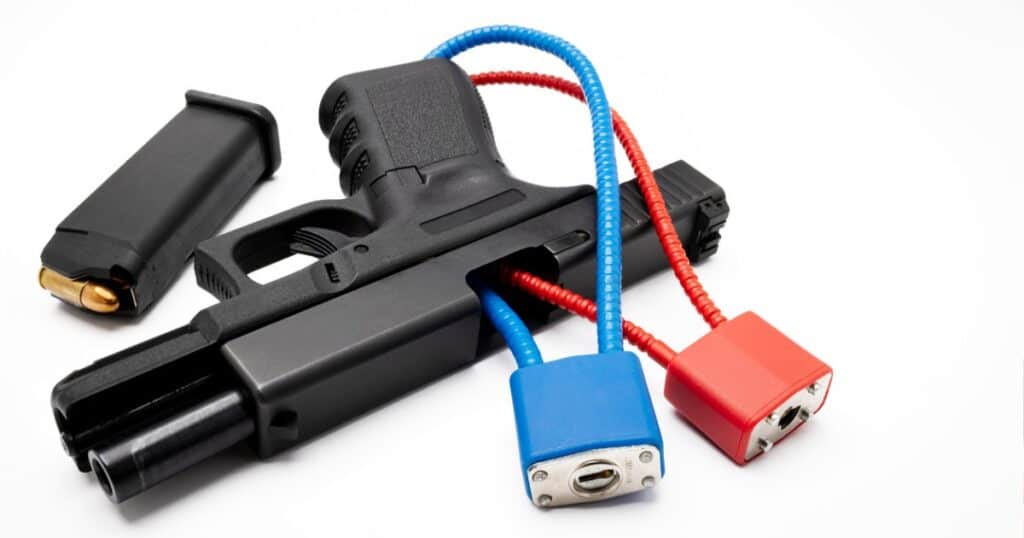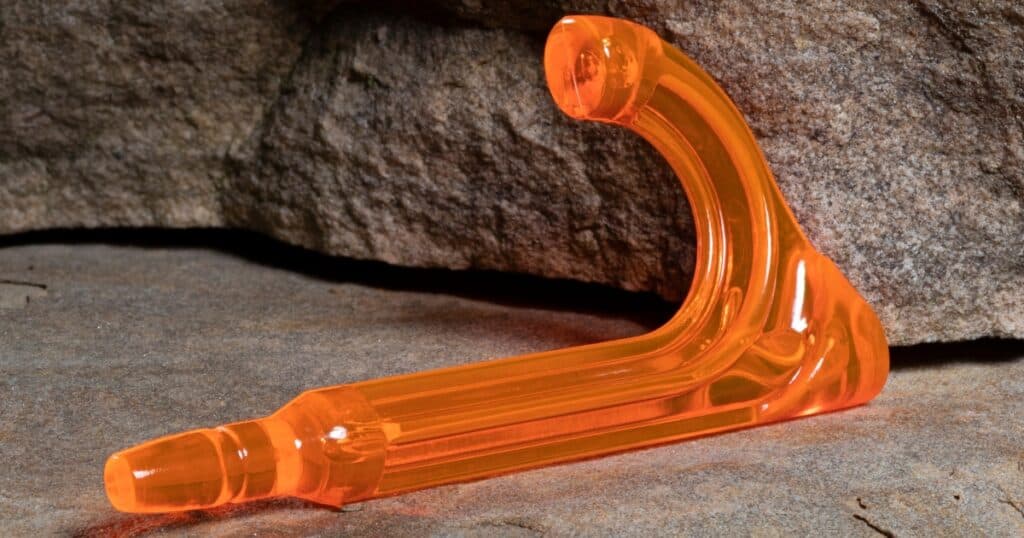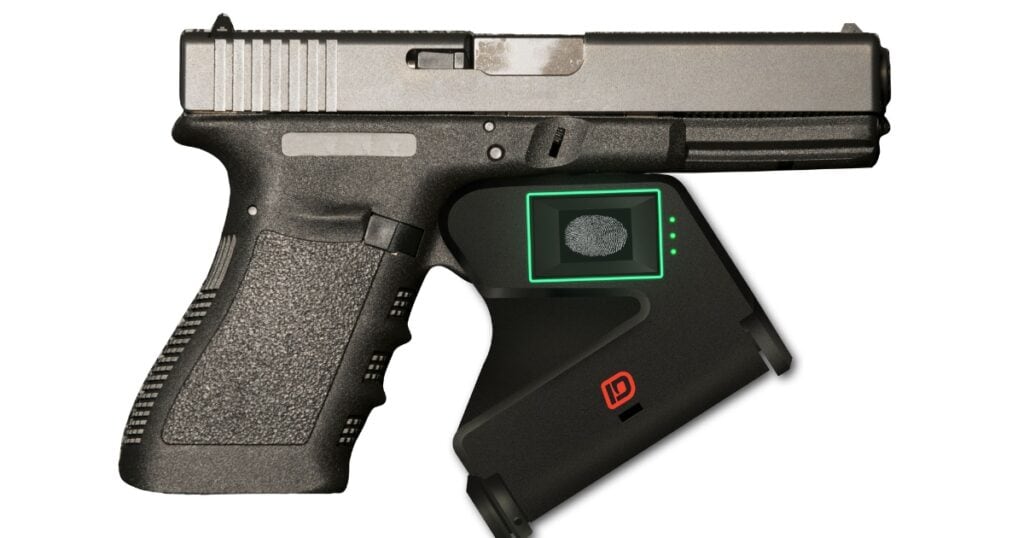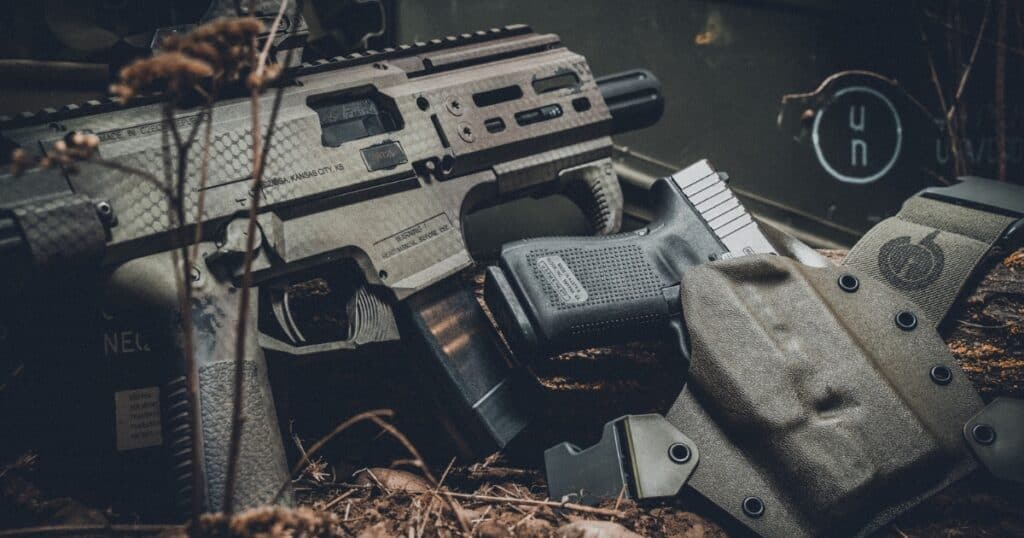As gun owners, our responsibility extends beyond our personal handling; it’s about ensuring our weapons are secure even when they’re not in our hands. Thankfully, we live in a time when technology can assist us in this task, offering several weapon safety devices designed to mitigate risk and promote safe gun handling practices.
The Fundamentals of Gun Safety
Firearm safety begins with the understanding and consistent application of some basic rules. These rules, although simple, are fundamental in preventing mishaps:
- Treat every gun as if it’s loaded: This rule means never assuming that a gun is unloaded. Even if you’ve checked it yourself, always handle the firearm as if it could discharge at any moment.
- Never point a gun at anything you’re not willing to destroy: This rule is critical because accidental discharges do happen, and the consequences can be devastating if the gun is pointed in an unsafe direction.
- Keep your finger off the trigger until ready to discharge: Your finger should rest on the side of the gun or along the trigger guard until you have made the decision to fire. This practice helps prevent unintentional discharges.
- Be sure of your target and what’s beyond it: Before you pull the trigger, know what you’re aiming at, what’s in line with it, and what’s behind it. Bullets can penetrate walls and even some barriers, potentially causing unintentional harm.
Accidental firing, also known as an accidental or negligent discharge, is an unintended activation of a firearm. This typically occurs due to poor handling, lack of proper firearm training, or faulty safety devices.
Accidental firings can have catastrophic consequences, ranging from property damage to serious injuries and even fatalities. Beyond the physical dangers, there are also legal implications. Depending on the severity of the incident and the laws of the jurisdiction, gun owners could face fines, lawsuits, or even jail time if their negligence results in harm or death.
Moreover, such incidents can have long-lasting psychological effects, especially if the unintended discharge harms or kills another person. The emotional trauma can be overwhelming, causing guilt, anxiety, and other mental health issues.
The Most Commonly Used Gun Safety Devices
For peace of mind, several approved firearm safety devices that have been tested and endorsed by safety organizations and experts can help you keep yourself and those around you safe and protected.
Gun Locks
A gun lock is a basic safety device designed to make your firearm inoperable, preventing unintentional discharges. Available in various designs like cable and trigger locks, these devices are typically universal, fitting most gun types.
- Trigger locks are designed to immobilize the trigger of your firearm, making it unable to fire. They typically consist of two pieces that fit over the trigger and the trigger guard.
- Cable locks work by threading a steel cable through the action of the firearm, preventing it from being loaded or fired.

Pros and Cons:
Gun locks are a cost-effective safety measure. They’re user-friendly and adaptable to a range of firearms. On the flip side, they may not offer foolproof security, as they can be compromised with certain tools or techniques.
Guided Usage:
Installation varies based on the lock type, but the process usually entails fitting the lock through a specific part of the firearm and securing it. Maintenance involves occasional checks to ensure the lock’s functionality.
Chamber Flag
A chamber flag is a simple but effective safety device used to indicate and ensure that the firearm is unloaded and safe. It is a brightly colored piece of plastic or other material that is inserted into the action of a firearm, obstructing the chamber and preventing a round from being loaded.

Pros and Cons:
Chamber flags are incredibly straightforward in their design and use, making them very user-friendly. They are also universal in that they can be used with a variety of firearms, from handguns to rifles and shotguns. Their bright color provides a visible safety check, showing from a distance that the firearm is secure.
However, like many other safety devices, they don’t prevent unauthorized access or use of the firearm. Additionally, while the flag indicates the weapon is safe, it should not replace physically checking the chamber and magazine to confirm that the firearm is unloaded.
Guided Usage:
Installing a chamber flag is a simple process. First, ensure the firearm is unloaded by checking both the chamber and the magazine. Then, insert the flag into the chamber of the firearm, ensuring it’s visible from the outside.
In terms of maintenance, chamber flags require very little. Simply check the flag for any signs of wear or damage, and replace it as necessary. Cleaning is typically not needed, but if it becomes dirty, it can usually be wiped clean with a damp cloth.
Gun Safes
A gun safe is essentially a secure storage unit for firearms. They range from small handheld cases to large floor models, employing various locking systems such as keys, combination dials, digital keypads, or biometric technology.

Pros and Cons:
Gun safes offer superior security and can house multiple firearms, along with ammunition and other valuables. They often feature fire and theft resistance. However, their higher price point, considerable weight, and size can limit portability.
Guided Usage:
To install, most safes need to be anchored to a solid surface. Regular use involves operating the locking system correctly. Periodic maintenance might include changing batteries or lubricating mechanical parts.
Chamber Locks
A chamber lock is a device that obstructs the chamber of your firearm, preventing ammunition from being loaded, and the firearm from being discharged.
Pros and Cons:
Chamber locks are easy to use and provide a visual safety check by showing that the firearm is secure. However, they may not be compatible with all firearm types, and their security, like others, can be bypassed with the right tools.
Guided Usage:
You can install a chamber lock by inserting it into the firearm’s chamber and locking it securely. Periodic checks to ensure it’s functioning correctly is the main form of maintenance.
Smart Guns
Smart guns are firearms equipped with an integrated safety feature that only allows an authorized user(s) to fire the weapon. They use different technologies, including biometrics (fingerprint recognition, palm print, or grip recognition) and radio frequency identification (RFID), which pairs the firearm with a wearable device like a watch or ring.

Pros and Cons
Smart guns provide an advanced level of security, as they’re personalized to a specific user or set of users. This helps prevent unauthorized use, reducing the risk of accidental discharge and rendering the gun useless in cases of theft.
However, concerns exist regarding the reliability of the technology, with fears of potential malfunctions during emergencies. Additionally, the cost of smart guns is higher than traditional firearms, which might be prohibitive for some users.
Guided Usage
For smart guns, the initial setup involves programming the gun to recognize the authorized user, a process that varies depending on the technology used. Biometric models require registration of fingerprints or palm prints, while RFID models necessitate pairing the gun with a wearable device. Maintenance mainly involves keeping sensors clean, software updated, and ensuring the associated wearable devices are in good condition.
Factors to Consider When Choosing Firearm Safety Devices
Choosing the right firearm safety device can feel like a daunting task, with a multitude of options each boasting various features. However, your decision should be guided by a few key factors that can ensure your firearm is effectively secured and that the device is practical for your needs.
Compatibility with Firearm Type
Not every safety device is a one-size-fits-all solution. Various firearms, from handguns to shotguns and rifles, require different safety mechanisms due to their distinct builds and firing mechanisms. Therefore, it’s essential to choose a safety device that is compatible with your specific firearm type. For instance, some chamber locks or trigger locks may not fit all firearms. Always check the product specifications to ensure compatibility.
Ease of Use
A firearm safety device should be easy to use. Complicated locking mechanisms can deter you from using the device regularly, defeating the purpose of owning it. Look for a device that can be easily installed and removed when necessary but remains secure when in place. Quick-access safes, for example, offer a secure storage option while providing you with quick, often biometric, access to your firearm in an emergency.
Quality and Reliability
The safety device you choose should be of high quality and reliable. Lower-quality devices might fail or be easily compromised, putting your safety at risk. Look for devices made of durable, robust materials that can withstand attempts at tampering. Consider products from reputable manufacturers with positive customer reviews and reliable customer service.
Cost and Availability
The cost of firearm safety devices can vary significantly. While your safety is priceless, it’s essential to consider your budget when shopping for a device. Remember, more expensive does not always mean better. Many affordable options are effective and reliable. Also, consider the availability of the device. Can it be easily purchased at local stores or online, and is customer service readily available if issues arise?
Maintenance and Care of Firearm Safety Devices

Maintaining your firearm safety devices is as crucial as caring for your firearm itself. These devices protect against accidental discharges, theft, and unauthorized use, so ensuring their proper function is of paramount importance.
Tips for Extending the Longevity and Efficacy of Safety Devices
- Regular Checks: Routinely inspect your devices for signs of wear or damage. This includes checking the functionality of all parts and ensuring no tampering has occurred.
- Cleaning: Keep all components, especially sensors on biometric and smart devices, clean for optimal performance.
- Battery Checks: For devices that require batteries, such as biometric safes and smart guns, check and replace them regularly to ensure they remain operational.
- Software Updates: If your device uses software, like smart guns, keep it up to date for optimal functioning.
- Professional Servicing: Consider having your devices professionally serviced or inspected periodically, particularly for complex devices like gun safes and smart guns.
- Safe Storage: Avoid subjecting your safety devices to extreme temperatures or damp conditions, which could affect their performance.
- Proper Use: Always use the device as instructed by the manufacturer. Improper use can lead to wear and tear, or even damage the device.
- Avoid Extreme Conditions: If possible, avoid subjecting your safety devices to extreme temperatures or damp conditions, which could affect their performance.
Armed and Safe
It’s empowering to witness how technology and innovation continue to shape our world, offering solutions even in areas we’d least expect. With these advances, we can ensure that the critical balance between safety and the right to bear arms remains undisturbed. We’re optimistic about the future of gun safety, knowing that with every new device and strategy, we are one step closer to a world where responsible firearm handling is the standard.
August 10, 2023
